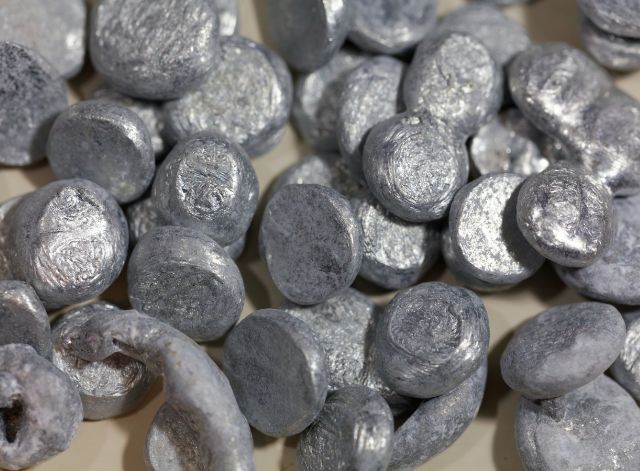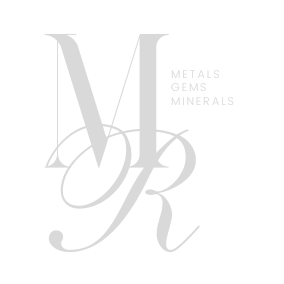Aluminium
bauxite
Aluminum is a highly versatile and valuable raw material used in many industrial applications. It is the third most abundant element in the Earth's crust, but it does not occur naturally in its pure form. Instead, aluminum is found in the form of various minerals, including bauxite, which is the most common source of aluminum ore.
The process of producing aluminum metal from bauxite involves several stages of processing. First, the bauxite is mined and processed into alumina, which is a white powder. Next, the alumina is smelted using an electrolytic process, which involves passing an electric current through the alumina to separate the aluminum metal from other elements.
Aluminum metal is commonly used in various industrial and commercial applications, including transportation, construction, packaging, electrical and electronics, and machinery. It is valued for its strength, durability, and corrosion resistance, as well as its lightweight properties that improve fuel efficiency and reduce emissions in transportation applications.


Copper
Copper Ore
Copper is a valuable and widely used raw material in many industries due to its excellent thermal and electrical conductivity, malleability, and corrosion resistance. It is a naturally occurring metal that is found in the Earth's crust in various forms, including as copper sulfide, copper oxide, and copper carbonate.
The process of extracting copper from its raw form depends on the type of ore and its location. In general, the process involves several stages, including mining, crushing, and concentration, followed by smelting and refining to produce high-purity copper metal.
Copper is commonly used in various industrial and commercial applications, including electrical and electronics, construction, transportation, and machinery. It is often used in electrical wiring and electronics due to its excellent conductivity, as well as in construction for plumbing and roofing due to its durability and resistance to corrosion.
Lead
galena, anglesite, and cerussite
Lead is a dense, soft, and highly malleable metal that is widely used in various industrial and commercial applications due to its corrosion resistance, low melting point, and high density. It is a naturally occurring element found in the Earth's crust, usually in the form of lead sulfide or lead carbonate.
The process of extracting lead from its raw form involves several stages, including mining, crushing, and concentrating the ore to produce lead concentrate, which is then smelted and refined to produce high-purity lead metal. The refining process involves removing impurities such as copper, zinc, and silver, which are often found in lead ores.
Lead is commonly used in various industrial and commercial applications, including in the production of batteries, ammunition, and radiation shielding. It is also used in construction and plumbing for its durability and resistance to corrosion, as well as in the production of various alloys, such as brass and bronze.


Tin
cassiterite, stannite, and teallite
Tin is a silvery-white, soft, and malleable metal that is widely used in various industrial and commercial applications due to its low toxicity, corrosion resistance, and low melting point. It is a naturally occurring element that is found in the Earth's crust in the form of tin ores, such as cassiterite.
The process of extracting tin from its raw form involves several stages, including mining, crushing, and concentration, followed by smelting and refining to produce high-purity tin metal. The refining process involves removing impurities, such as iron, copper, and arsenic, which are often found in tin ores.
Tin is commonly used in various industrial and commercial applications, including in the production of tinplate, which is a thin sheet of steel coated with a layer of tin that is used in the production of cans and containers for food and beverage products. Tin is also used in the production of various alloys, such as bronze, pewter, and solder, as well as in the production of electronic components, such as capacitors and transistors.
nickel
pentlandite, pyrrhotite, and garnieritee
Nickel is a silvery-white, hard, and ductile metal that is widely used in various industrial and commercial applications due to its excellent resistance to corrosion and high-temperature stability. It is a naturally occurring element that is found in the Earth's crust in various forms, including as nickel sulfide, nickel oxide, and nickel silicate.
The process of extracting nickel from its raw form depends on the type of ore and its location. In general, the process involves several stages, including mining, crushing, and concentration, followed by smelting and refining to produce high-purity nickel metal.
Nickel is commonly used in various industrial and commercial applications, including in the production of stainless steel, which is an alloy composed of iron, chromium, and nickel. Nickel is also used in other alloys, such as Inconel and Monel, which have high-temperature and corrosion-resistant properties.


ZinC
sphalerite
Zinc is a bluish-white, lustrous metal that is widely used in various industrial and commercial applications due to its unique combination of properties, including resistance to corrosion, good electrical conductivity, and low melting point.
Zinc ore is typically extracted through mining, which involves drilling and blasting the rock to access the ore, followed by hauling and processing to extract the zinc metal. The processing of zinc ore involves several stages, including crushing, grinding, concentration, and refining, which can involve flotation, roasting, or other methods, depending on the type of ore and the desired purity of the final product.
Zinc is an important raw material in the production of various products, including galvanized steel, brass, and zinc-based alloys. The largest producers of zinc ore include China, Australia, and Peru.
